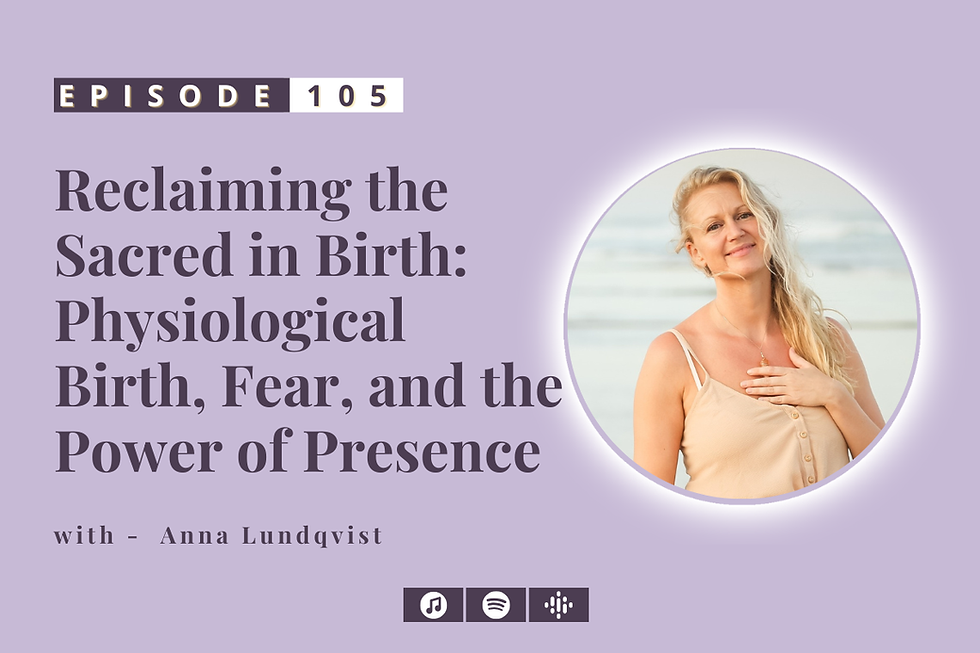#31: How do I Know I Am In Labor? Signs Your Body is Getting Ready for Labor in Late Pregnancy
- Clara clarajorourke@gmail.com
- Mar 19, 2024
- 3 min read

Wondering what changes your body will experience in late pregnancy? Or what signs to look out for that mean your body is actually in labor?
In this episode, we dive into the following:
Signs your body is getting ready for labor in late pregnancy
Signs labor is approaching
How to tell Braxton Hicks contractions from actual labor contractions
Listen to the episode now:
Welcome back to another episode of the Mindful Womb Podcast. Today we're diving into a topic that often mystifies many expectant parents – the signs that your body is gearing up for labor. Partners frequently ask me, "How do we know it's time to head to the hospital?" Well, worry not! In this episode, we'll explore the various signals your body sends as it prepares for the grand entrance of your little one. Let's embark on this exciting journey of late pregnancy and the early stages of labor.
Late Pregnancy Signs:
So, you're in the homestretch, and your baby is getting ready for their birthday party. What can you expect in late pregnancy? First off, your little one might start making their descent into your pelvis. This "lightening" feeling is common for first-time parents, occurring a few weeks before labor kicks in. For experienced parents, this might happen closer to the labor day. You may notice changes like waddling more and increased pressure on your bladder as the baby's head engages.
Additionally, your cervix is doing some prep work too – dilating and thinning. Don't fret if progress seems slow; everyone's journey is unique. Some may feel cramps, increased back pain, or even a sensation like things are "spicy down there." The key is to stay grounded, conserve energy, and listen to your body's cues.
Pre-labor Signs:
As you approach the grand finale, your body might drop some hints. The mucus plug or "bloody show" might make an appearance, signaling that labor is on the horizon. Increased vaginal discharge and non-progressing contractions, commonly known as Braxton Hicks, are also typical pre-labor signs. Remember, the breaking of waters doesn't always happen dramatically like in the movies; it's a unique experience for each person.
Knowing the signs of pre-labor can help you stay informed and prepared for what's to come. If you experience anything unusual, always consult your healthcare provider for guidance.
Signs Labor is Starting:
Now, let's talk about the real deal – the signs that labor is officially underway. Consistent contractions are the primary indicator. Contractions will become more regular, lasting longer and growing in intensity. Keep an eye on the pattern – contractions approximately four to five minutes apart, lasting around 60 seconds, could mean active labor.
Remember, communication is key. If you're less than 37 weeks pregnant and notice increased contractions and have 4 or more contractions in an hour for two hours, especially if accompanied by other pre-labor signs, consult your healthcare provider to rule out premature labor.
Understanding the signs your body gives as it readies for labor is crucial. It's not just about recognizing physical changes but also maintaining a positive mindset. Stay grounded, embrace the process, and communicate with your support team.
I hope this guide helps you navigate the exciting journey of childbirth. Don't forget to check out my self-paced online childbirth class at clearlightbirth.com/power for more in-depth insights.
Thank you for tuning in, and until next time, happy birthing!
Thank You for Listening
If this episode lights you up, I’d love it if you’d rate and review the show on Apple Podcasts, Spotify, or wherever you listen to podcasts. After you review the show, snap a pic and upload it here… and I’ll send you a little surprise as a thank you.
Your feedback helps this podcast grow, and I am so grateful for your support!
Don’t forget to subscribe to the Mindful Womb Podcast on iTunes so you never miss an episode.




Comments